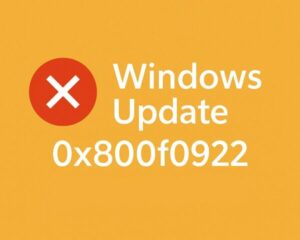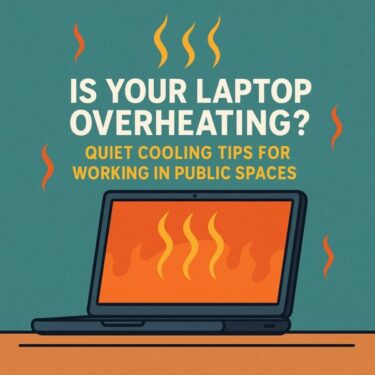
- 1 Fix Windows Update Error 0x800f0922 – Causes, Solutions, and Prevention
- 2 What Causes This Error and How to Fix It
- 2.1 Cause #1: Not Enough Free Space in the Recovery Partition
- 2.2 Cause #2: .NET Framework Misconfiguration or Corruption
- 2.3 Cause #3: VPN, Firewall, or Proxy Interference
- 2.4 Cause #4: Corrupted Windows Update Components
- 2.5 Cause #5: BIOS Settings Conflicting with Updates
- 2.6 Bonus: Use the Media Creation Tool for Manual Upgrade
- 2.7 Summary Table
- 2.8 Preventing the Error in the Future
- 2.9 Final Thoughts
Fix Windows Update Error 0x800f0922 – Causes, Solutions, and Prevention
Have you tried installing a Windows update, only to be stopped by error code 0x800f0922? It’s frustrating, especially when everything seems fine—until the update fails near the end. This error often occurs with cumulative updates or when enabling the .NET Framework.
In this article, we’ll guide you through the detailed causes behind error 0x800f0922, why it happens, and how to fix it. Whether you’re a beginner or an advanced user, these tips will help you move forward confidently.
What Is Error 0x800f0922?
Error 0x800f0922 typically appears when the Windows Update process fails during the installation or configuration stage. It’s not a download issue—instead, it usually means something on your system is blocking the final setup process.
Common Symptoms:
- Update gets stuck at a certain percentage (e.g., 96%)
- “Some updates were not installed” with 0x800f0922 code
- Fails to apply .NET Framework updates
What Causes This Error and How to Fix It
Cause #1: Not Enough Free Space in the Recovery Partition
Windows reserves a small section of your disk—called the recovery or system reserved partition—for boot files and essential recovery tools. If this partition doesn’t have enough free space, updates that modify boot files will fail with error 0x800f0922.
Why this matters: Modern updates often rewrite boot components. If there’s no space to save them securely, Windows won’t proceed.
How to check: Use Disk Management or a tool like MiniTool Partition Wizard. Look for a partition of about 500MB, usually labeled “System Reserved.”
Fix: Expand the recovery partition to at least 500MB using partition management software. Back up your system before making any changes.
Note: Incorrect edits to partitions can render your PC unbootable. Proceed with caution or consult a technician if unsure.
Cause #2: .NET Framework Misconfiguration or Corruption
Some updates require .NET Framework to be properly enabled. If it’s missing, disabled, or corrupted, error 0x800f0922 may appear—especially when installing .NET Framework 3.5 or 4.x components.
Fix:
- Open “Control Panel” → “Programs” → “Turn Windows features on or off”.
- Check the box for “.NET Framework 3.5 (includes .NET 2.0 and 3.0)”.
- Click OK and follow prompts to download and install.
Beginner Tip: If the installation fails, ensure you’re connected to the internet and not using a VPN or proxy.
Advanced Tip: If needed, use the following DISM command with your Windows installation media:
Dism /online /enable-feature /featurename:NetFX3 /All /Source:D:\sources\sxs /LimitAccessCause #3: VPN, Firewall, or Proxy Interference
Some updates require secure connection to Microsoft servers. If a VPN, proxy, or antivirus firewall is blocking access, the update process may silently fail, returning error 0x800f0922.
Why this happens: Enterprise users or anyone using strict firewall settings are especially at risk. Windows may detect the server as unreachable and abort the installation.
Fix:
- Temporarily disable your VPN or proxy settings.
- Turn off your antivirus firewall during the update.
- Reset Internet Settings: Run
inetcpl.cpl→ Advanced tab → Click “Reset”.
Note: Always re-enable your VPN and antivirus after completing the update.
Cause #4: Corrupted Windows Update Components
Sometimes, the update system itself is broken—usually from past incomplete updates or registry errors. Resetting the Windows Update components can solve error 0x800f0922.
Fix: Open Command Prompt as Administrator and run the following:
net stop wuauservnet stop cryptSvcnet stop bitsnet stop msiserverren C:\Windows\SoftwareDistribution SoftwareDistribution.oldren C:\Windows\System32\catroot2 catroot2.oldnet start wuauservnet start cryptSvcnet start bitsnet start msiserverWhat this does: It clears corrupted update cache files and restarts Windows Update services.
Cause #5: BIOS Settings Conflicting with Updates
Features like Secure Boot and Fast Boot are designed to protect or speed up your system. However, on some machines, they can interfere with low-level update processes.
Fix:
- Enter your BIOS/UEFI setup (usually by pressing F2, DEL, or ESC during startup).
- Disable “Secure Boot” and “Fast Boot”.
- Save and exit, then retry the update.
Note: Write down your current BIOS settings so you can revert them later.
Bonus: Use the Media Creation Tool for Manual Upgrade
If nothing else works, download Microsoft’s Media Creation Tool to manually update your PC. This method often bypasses whatever is causing 0x800f0922.
Steps: Launch the tool → “Upgrade this PC now” → Follow instructions on-screen.
Summary Table
| Cause | Recommended Fix |
|---|---|
| Insufficient recovery partition space | Expand it to at least 500MB |
| .NET Framework error | Enable via “Windows Features” or DISM |
| VPN, proxy, or antivirus block | Temporarily disable and retry update |
| Corrupted update components | Reset services via Command Prompt |
| BIOS settings conflict | Disable Secure Boot or Fast Boot |
Preventing the Error in the Future
Once you’ve fixed the error, keep your system clean and up-to-date to avoid future issues. Regularly update device drivers, ensure your recovery partition stays intact, and avoid installing unnecessary security software that may interfere with system processes.
Final Thoughts
Error 0x800f0922 is more common than it seems, but with the right steps, it can usually be resolved without reinstalling Windows. Whether the issue is a space problem, a network block, or a system misconfiguration, now you’re equipped with the tools and knowledge to fix it.
If you’ve tried everything and the error persists, consider performing an in-place upgrade or consulting support. Most users, however, will find one of the above solutions effective.
✔️You might also find these helpful:
▶︎How to Use Public Wi-Fi Safely Without a VPN (2025 Edition)
▶︎Windows 11 24H2 Update Breaks Internet: Causes & Fixes for Global Users
▶︎How to Fix “No Internet Access” on Windows: Causes and Solutions (Wi-Fi & Ethernet)


